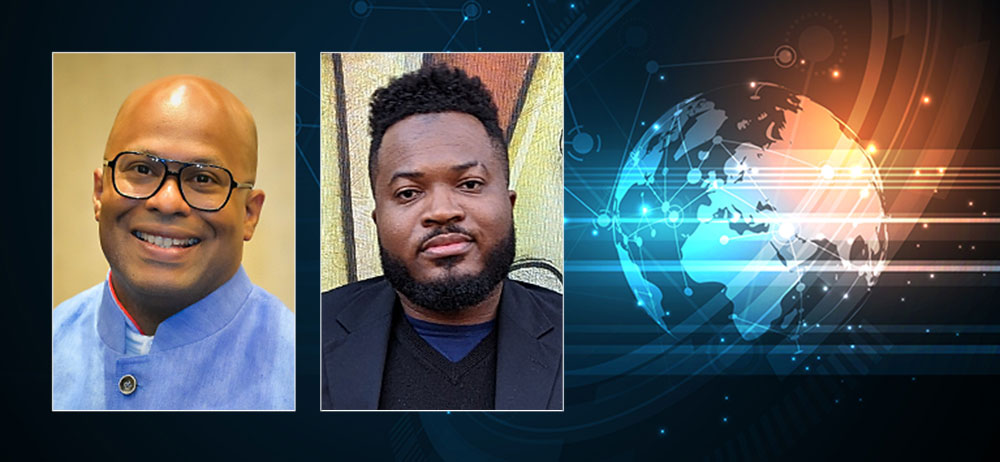How do we make the face of the scientific workforce grow to reflect that of the communities around us? The team of professionals dedicated to Diversity, Equity, Inclusion, and Accessibility (DEIA) at the U.S. Department of Energy’s Brookhaven National Laboratory realize that it’s not a task they can accomplish alone. Partnerships are essential to promote recruitment and retention of diverse talent and creating a diverse workforce benefits everyone. Varied perspectives and experiences often lead to better outcomes and invigorate the work and culture of an organization. For this reason, Brookhaven has been a long-time supporter and partner of the National Consortium for Graduate Degrees for Minorities in Engineering and Science (GEM), each year providing summer employment to several GEM fellows.
GEM’s mission is to increase the participation of underrepresented groups (African Americans, American Indians, and Hispanic Americans) at the master’s and doctoral levels in engineering and science. Sponsored by a consortium of university and employer members, GEM offers fellowships to selected students. The Lab’s DEI Office works closely with GEM staff to administer the program.
“We’re a nonprofit whose vision is scientific impact,” explained Brennon Marcano, chief executive officer (CEO) of GEM. “It is a very laser-focused vision because everyone who is a part of GEM is always thinking about how the world would be with science leading it. We have always tried to keep our vision at the forefront of what drives this organization, and it aligns really well with all of our current clients and many of the folks that we’re chatting with about joining the consortium. I think there’s a significant groundswell towards scientific impact.”
Several other national laboratories are among the more than 80 corporate institutions who have partnered with GEM to identify and recruit viable and promising talent. GEM also has over 130 university partners, including Ivy League schools and minority serving institutions. Anywhere STEM professionals are needed, there is an opportunity to invest in GEM’s pool of talented scholars.
“Our alumni and the success stories that come out of this program really tell our story,” said Marcano. “Currently, half of the minority female deans of engineering schools in the country are GEM alums along with a fair amount of their male counterparts. We have provosts and presidents of universities, many of whom have already been inducted into the National Academy of Engineering, which is the highest accolade you could get from an engineering perspective. There are also notable senior executives in industry, like Ursula Burns, former chair and CEO of Xerox; Reggie Van Lee, chief technology officer of The Carlyle Group; and Sylvia Acevedo, who ran Girl Scouts USA and is now on the board of Qualcomm. There’s an extensively longer list, but this gives an idea of the kind of workforce we’re building.”
Brookhaven Lab has a long history with GEM and is home to a number of alumni, including Abe Ledbetter, a specialist and research fellow working in the Diversity Office and helping to facilitate programs like GEM.
“In recent years, we have focused on establishing a culture of inclusion and belonging for employees, visitors, and facility users of all backgrounds,” said Ledbetter. “This is an important value proposition for talent from minoritized groups. GEM understands this value, and not only assists us in identifying the talent we aim to attract, but has created a community for networking and learning. We extend that sense of community for our GEM fellows with mentorship and meaningful connections that may remain viable well beyond their summer appointments.”
One of those fellows, Nuclear and Particle Physics GEM Fellow & Researcher Allen Pierre-Louis, has already made meaningful impact here at the Lab and at Stony Brook University, where he’s pursuing a graduate degree in physics. At Brookhaven, his research is focused on the feasibility of measuring specific kinds of electron-proton scattering at the future Electron-Ion Collider facility. Prior to his work there, he interned with the Nuclear Physics Traineeship Program. Pierre-Louis is also a contributing member of the National Society of Black Physicists (NSBP), where his nuclear and particle physics oral presentation won first prize at last year’s conference. Pierre-Louis isn’t just building his own career, though, he’s also ensuring that this opportunity can provide resources for others in his community.
“When you’re a student, time is a commodity,” remarked Pierre-Louis. “I didn’t grow up with a lot of money, and because of the systemic issues that a lot of minority students are still facing, so many of them feel that pressure too. If you can pursue a degree, you still need to work when you’re not studying in order to support yourself. The stipend GEM provides allows students to not only have the time they need to focus on their academic work, but to be a part of the student community. Being able to use that time, I was able to start a local Stony Brook chapter of NSBP while interning at the lab and studying at Stony Brook.”
Last summer, Pierre-Louis was one of three GEM scholars from Brookhaven honored with Augustus “Gus” Prince Awards for African American Scholars to pursue their advanced degrees and the work they started at the Lab. Each of them, under the mentorship of leaders in the field, pursued areas of research that aim to make significant impacts in the future, like climate research and biomedical engineering. These students are shining examples of how the accessibility of advanced education benefits everyone in the end. The research and work that they are preparing themselves for will ultimately not only have an impact on the greater STEM community, but the world itself.
Brookhaven National Laboratory is supported by the Office of Science of the U.S. Department of Energy. The Office of Science is the single largest supporter of basic research in the physical sciences in the United States and is working to address some of the most pressing challenges of our time. For more information, visit science.energy.gov.
Follow @BrookhavenLab on Twitter or find us on Facebook
